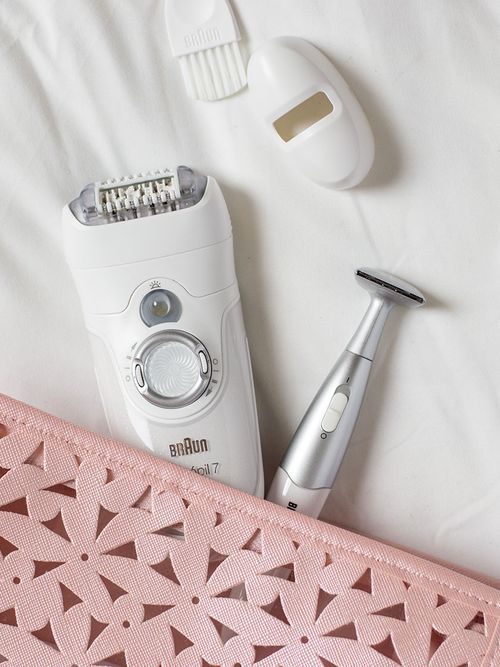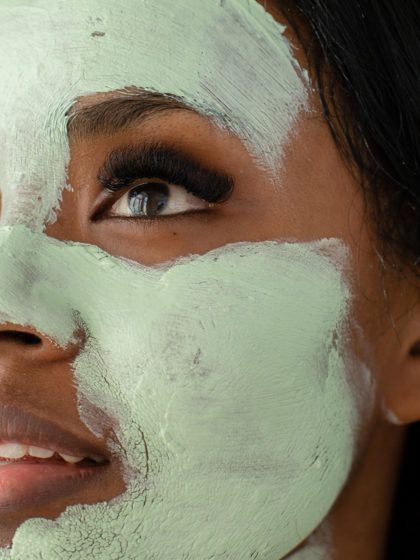Everything you need to know about laser hair removal
Being a woman is exhausting. Whether you embrace the au naturel route or choose to bare all, hair removal is inevitably part of your beauty vernacular. Whether it’s a monthly wax, daily shave, bi-weekly pluck, sugar, epilation, or the rest, hair removal can be both a mentally and time-consuming ordeal. So, we sought to ask an expert on whether the supposedly permanent method of laser hair removal is actually worth the time (and $$$) it takes.
How does laser hair removal work? Is it safe? Do men get lasered? Christian Karavolas, the owner of New York-based laser salon Romeo & Juliette, is here to tell us.

Model hair removal? Victoria Secret models Sara Sampaio and Chanel Iman have both spoken openly about getting laser treatments for hair removal.
Who else keeps up? The Kardashians, of course! Kim Kardashian once told Allure, "I am Armenian, so of course I am obsessed with laser hair removal! Arms, bikini, legs, underarms … my entire body is hairless."
How does laser hair removal work and why does it normally require several treatments?
“Laser is a beam of light that bypasses the epidermis (our outer layer of skin) and disables the reproductive cycle of the hair within the follicle,” says Christian.
Basically, a concentrated beam of light zaps the hair follicle to inhibit future hair growth. The number of sessions it takes for someone to see noticeable results with laser treatments vary, but you can expect it to take between two and six treatments depending on your hair color and the treatment location.
“As your hair cycle has three stages (Anagen, Telogen, Catagen), one needs repeated treatments to synchronize the hair growth cycle and make sure that all stages of hair cycle are lasered for permanent hair reduction.”
Do results vary depending on skin or hair pigmentation?
Because lasers are attracted to the pigment and melanin (the natural pigments in the body that determine skin and hair color) in hair, darker hair colors tend to show better results than lighter shades, Karavolas told Stylight.
This means, however, hair with little pigmentation, i.e. light blonde and white, don’t tend to see substantial results with laser treatments. Laser treatments are also an incredibly effective way to get rid of ingrown hairs in darker skin tones.

People with lighter hair shades should save their money and skip the laser treatments. Because light hair colour is the result of little to no pigment, i.e. a lasers' best friend, they won't be able to produce the noticeable or worthy results laser patients typically are hoping for.
Is laser hair removal safe?
“Lasering is safe as long as the right lasers are used for the right skin tone. People who are on strong antibiotics or are photosensitive should avoid laser hair removal,” says Christian.
When choosing where to get your laser done, it’s important that either a doctor or board-certified trained professional is the one handling the lasers; avoid discount salons that don’t offer properly-trained personnel.

How permanent is laser?
“Non-hormonal areas such as legs, bikini, and underarms do get permanent results. Hormonal areas, like the face, may need occasional touch-ups.
During pregnancy, due to hormones, there may be some regrowth, however, this should stabilize a few months after pregnancy.”

Weekend by Max Mara
Sweaters Cream White
$561.00
Balardi
What are the most common areas for women to laser? What about men?
Most women receive treatments on their legs, bikini area, and underarms, according to Christian. In addition, many women come in to get areas of their faces lasered.
Christian notes that laser is not a female-centric practice; around “40% of our clients are male.” The most popular treatments for guys? Arms, chest, back, bikini, buttocks, and face.
At what point in someone's life is laser most effective as a hair removal method?
“Laser is most effective when the hormones are stabilized. Young men with elevated testosterone levels may need more treatments later in life.”
In addition to moisturizing, it’s important to exfoliate and lather up on sunscreen post-laser treatment. Sun exposure should be avoided for at least four weeks prior to your laser appointment. “However, after being treated, [you] can be in the sun within a few days, as long as the irritation from the laser has subsided,” says Christian.
All in all, if you have the resources and willingness, laser is one of the most permanent and effective hair removal techniques. It’s not for everyone, but if you’re interested, starting treatments in the fall or winter months is the best practice as your skin tends to be its palest and least affected by sun exposure.







